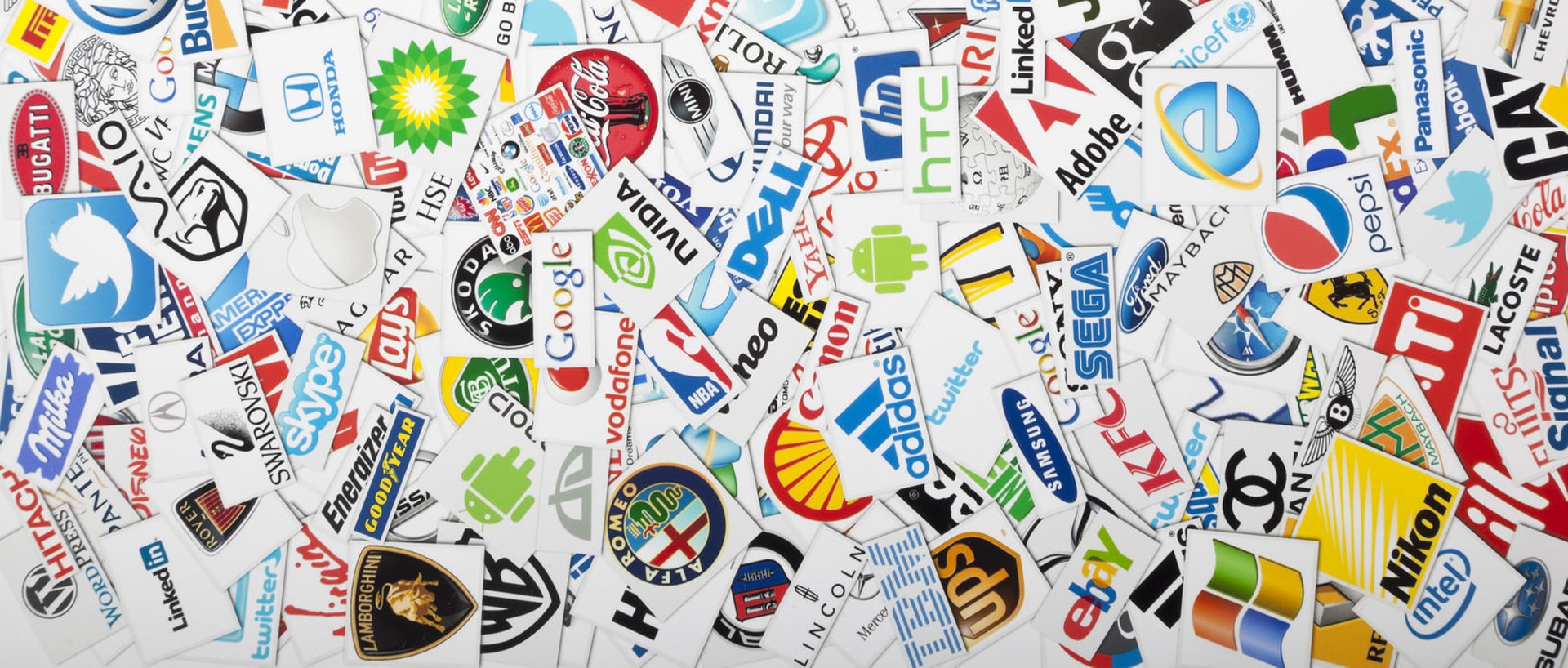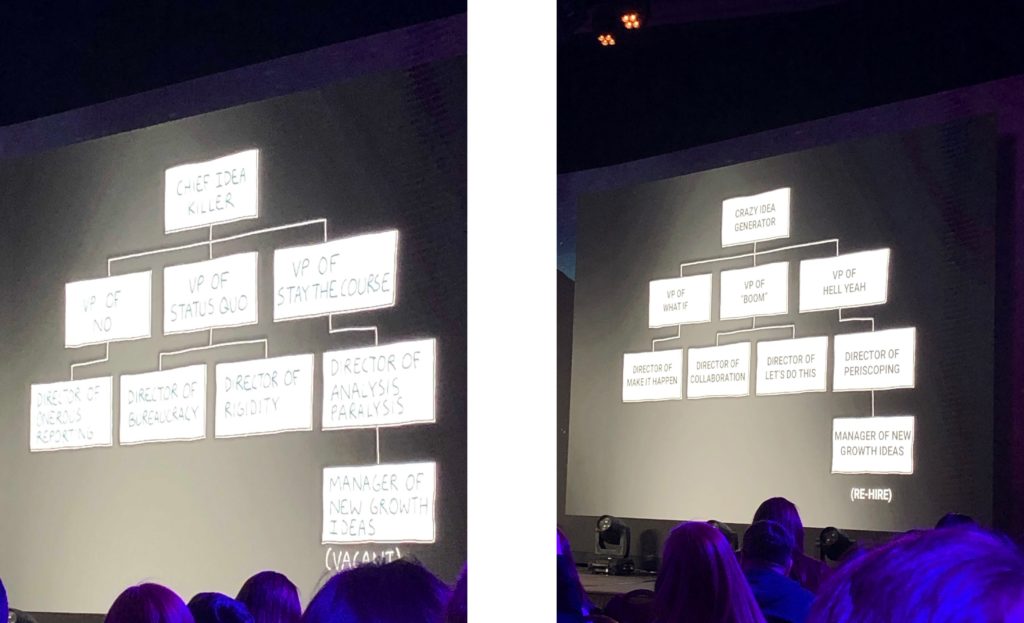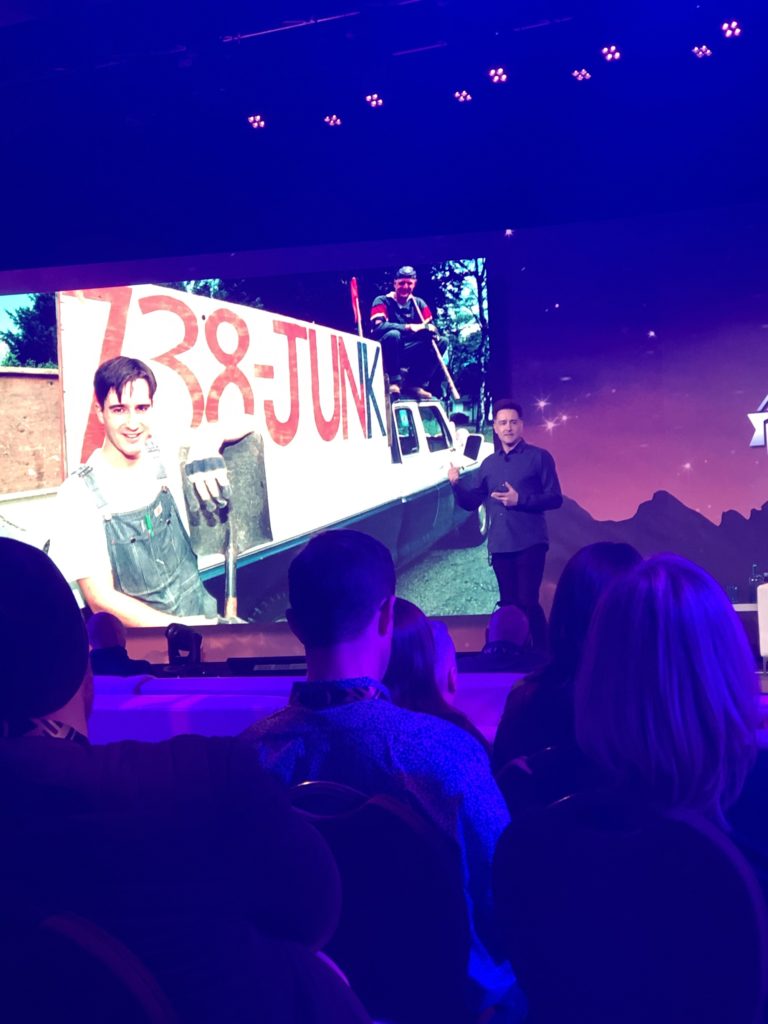
What do airplanes, junk-removal, and skateboarding have in common? A lot more than you may think. These were just three categories represented at The Gathering 2019 where brand leaders from Air Canada Rouge, 1-800-Got-Junk, and professional skateboarder Tony Hawk shared their advice for growing cult brands. Over the course of three days, the Fairmont Banff Springs hosted over 20 brand leaders such as S’well, LUSH, The North Face, YETI, M&M’s, Marvel, Airbnb, and Porsche as they told their brand stories.
Typically, I leave conferences a bit exhausted and feeling a little burnt out from networking. This conference was different. So many talks emphasized authenticity and influenced the conversations and connections in the moments between sessions. I found the people I spoke to were open, honest, and raw. In return, I found myself making more meaningful connections. In an industry where we are being asked to continually do more with less and create year-over-year revenue gains, it can feel guarded and competitive. The tone of the speakers and off-stage conversations were collaborative and inspiring; building brands is a different business than selling goods and services. It’s about creating value in the world, solving unique problems, and challenging ourselves and the brands we represent to do incredible things. Here are five of the major lessons I took away.
1. Find your Purpose
Find your purpose as an individual, and as a brand. Tom Herbst, Head of Global Marketing for The North Face, noted that we spend 60 – 70% of waking hours at work, so if we don’t care about what we are doing, we can’t do our best work. Herbst advised not to chase the sexy clients or the award-winning companies but to chase the work that inspires you, that you believe in. The work will thank you, your family will thank you, you will thank you. As brand leaders or as agency partners, challenge your organization on their true purpose – why do you exist?
So, how do you get there? Kendra Peavy, VP Global Communications from S’well, says you have to be real, you have to dig deep. If you are not authentic your consumers will call you out on it. Peavy also said to recognize that not all brands were built on purpose. If that’s the case, be willing to pump the breaks and go back to the core “WHY” of your business.
2. Find your People
When you truly understand your purpose and the purpose of your organization, it not only becomes easier to make strategic decisions on how to get there but also WHO you need to get there. Brian Scudamore, Founder
Douglas Atkin, Former Global Head of Community from Airbnb, spoke to the deep connection between your people, your internal culture, and your brand. Atkins suggests that when you create company values, they are not aspirational but a reflection of values that truly represent you, at your best. Create an internal culture where people feel safe performing, not conforming.

3. “Be a f —ing human”
This is a direct quote from Herbst of The North Face. While the sentiment is certainly not new, it is more difficult to master than you would think. Back when I was starting my career, my first job was in sales. I very quickly adopted a personal mantra which I referred to as DTR (“Drop The Robot”). What that meant to me was to ditch a script and be human, take time to build rapport, be myself, and listen. It’s perhaps easier for an individual to implement than a brand, but it’s clear from listening to The North Face story that keeping that “human” element is embedded in their culture and manifested in their communications.
What I found compelling about this presentation was that The North Face came to a fork in the road where they had to decide; are we a company that sells outdoor goods and apparel or are we a brand that inspires humans to explore and move the world forward? The brand leaders stepped back and reflected on the brand and what was going on in the world at the time. The outcome was the campaign, Walls Were Meant For Climbing, which resonated deeply with their brand purpose and also stood up for a belief that was somewhat controversial within the political context at that time. It was brave, it was authentic, and it allowed them to continue to grow like a global brand while will being vulnerable and approachable like a local brand.
4. Data + Gut
It’s time to move from I think to I know. While you cannot rely solely on data, some data is necessary in order to deeply understand your customers and how your brand is perceived in the market. Erik Huberman, CEO from Hawk Media, fed the left-brain people some data-snacks in a digital analytics presentation. Huberman highlighted the importance of measurement but also understanding what your measuring, and why. It is easy to feel overwhelmed in vanity metrics, but we need to step back and look at the bigger picture. He noted the CAC (Cost to Acquire Customer): LTV (Life Time Value of a Customer) ratio as one of the most powerful metrics to understand. However, in order for that to mean something to your business, you need to factor in things like how you’re measuring a conversion, the length of your buying cycle and your customers behavior.
Strata Insights spoke at length about the value and power of the CMO and CFO power team. Strata
Mindy Hamilton, Dr. VP of Global Partnerships and Marketing with Marvel, called it throwing up a periscope – having a pulse on what’s going on with your market, your audience, and the cultural context. Understanding context and audience is what led to an outrageously successful partnership between Lexus and The Black Panther. While data and analytics is certainly a growing theme for brand leaders, Scudamore (O2E Brands) noted that many of his entrepreneurial success was gained from decisions rooted in gut instinct. My personal belief is that strategy should be data-driven 80% of the time but we should leave room for instinct, creativity, and a sensible gut-check.
5. Take Risks and be Willing to Fail
Risk taking is certainly a common theme of any successful business or individual. I’ve rarely come across a successful brand or individual who “played it safe”. Scudamore (O2E) spent most of his keynote speaking to his book titled WTF?! (Willing To Fail). He spoke of the power of a vision or purpose and its ability to help guide your decisions. It can be easier to take a risk when it’s strongly aligned with your vision. From Scudamore’s experience, the right decision is generally not the easy decision but when you are true to your vision, you can make choices you are willing to fail for. But chances are, you won’t.

From a personal brand perspective, 50-year-old professional skateboarder, Tony Hawk spoke about finding differentiation within your adversity and through your failures. Hawk says when you do what you love and you’re authentic, you can take risks and know that even if you fail along the way, you will still be headed in the right direction. Hawk has built an incredible personal brand for the better part of three decades and says not every person is a brand, but every brand should have a personality
For many brand leaders or business owners it’s easy to dismiss advice from big brands, comparing resources or revenue and thinking they don’t stand a chance. Budgets don’t build brands – people build brands. There are financial and economic pressures for certain, but that pressure should really challenge us to be better. Be willing to fail, fail fast, embrace failure, document failure, and make adjustments.
There is no formula for building a brand, but after listening to global brand leaders over a few days a common theme emerged. When you start with purpose, build teams who can rally around your vision, you stay human, use data and creativity, and take risks – some pretty incredible things happen.
To learn more about your brand strategy, contact us today.

